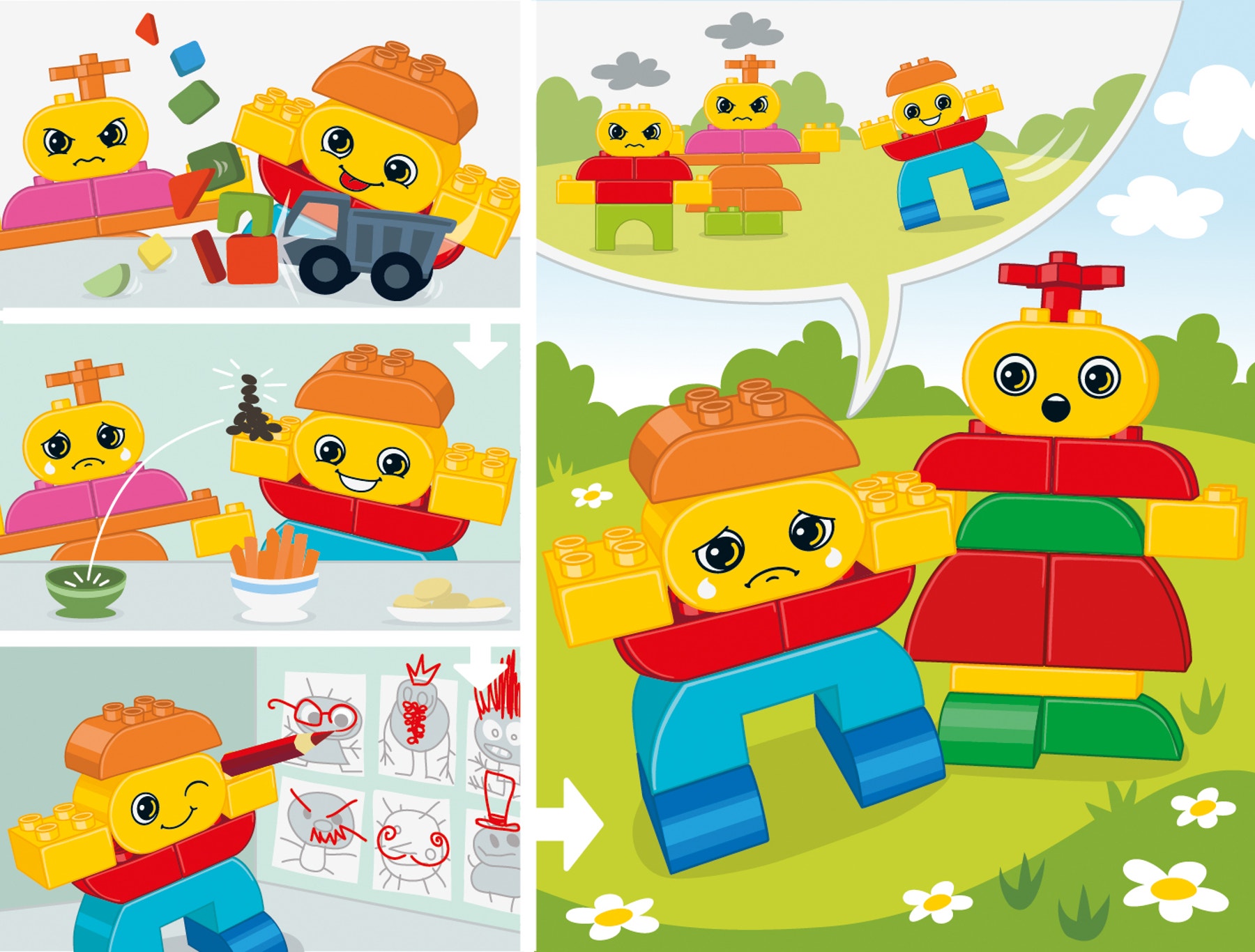Maddox Makes Mischief
Understanding how your behavior affects others.

Connect
Tell the children you will read a story about Maddox.
Explain that in the story, Maddox behaves in ways that make the other children want to avoid him, or stay away from him.
Show the children the illustration for this lesson.

Read the following story aloud:
One day at preschool, Maddox was on a rampage. During free choice playtime, he loudly pushed a toy truck all around the room. He saw some other children building a tall tower with blocks.
Maddox rammed the truck into the block tower and shouted, “Crash! Bang! Boom!”
Blocks went flying everywhere!
Jeesun yelled, “Maddox! That was mean!”
Maddox ignored her and cruised away with the toy truck.
At snack time, Maddox ran to the snack table, grabbed handfuls of raisins, and shoved them into his mouth. He did not leave any raisins for anyone else.
“I really wanted some raisins,” Jeesun said sadly.
Later in the day, when all the other children were putting away art supplies, Maddox did something very naughty. He took a red crayon and drew moustaches, beards, and other things on some of the other children’s drawings. Then he stood and laughed at the silly-looking faces.
Jayden noticed what Maddox had done and yelled, “Maddox! You ruined my picture!”
“No, I made it funny!” Maddox said.
At the end of the day, a group of children was playing tag on the playground. Maddox tried to join the game.
“Can’t get me, turtle!” Maddox yelled at the boy who was “it.” The boy ignored Maddox, chased Jeesun, and tagged her.
“Try and catch me,” Maddox said to Jeesun.
Jeesun also ignored Maddox.
Maddox ran to Mrs. Muffin and complained, “No one will play with me.”
Consider asking questions like:
- Would you want to play with Maddox? Why or why not?
- What could Maddox do differently that might help him find more friends to play with?
Construct
Tell the children to work with a building buddy.
Show them the story illustration again.
Ask each pair of children to build Maddox or one of the other characters in the story.
Contemplate
Ask each pair of children to act out a scene from the story. Then ask each pair to act it out again, but this time, ask them to change Maddox’s behavior to show how a good friend would act.
Continue
Remind the children that the way they treat others affects how people feel about them. Tell them that part of being a good friend is understanding how others feel.
Ask the children to work with a building buddy to use one face brick and other bricks to build a model of a preschooler.
Encourage them to think about body parts and other features (e.g., clothing, shoes, hat).
Show the story illustration or the building cards in the set as examples.
Tell the children that they will use their preschooler models to play a game called “Find a Friend.”
Read the “Find a Friend” prompts and encourage the class to look at all of the models and choose the best one(s) that fit(s) each description.
Talk about why the children selected the models they did for each prompt. Note: more than one preschooler model may fit the description.
Find a Friend Promts
Find a friend whose face makes you feel like you want to meet him or her.
Find a friend who looks worried about something.
Find a friend who looks as if he or she could use some comforting and kind words.
Find a friend who looks lonely.
Find a friend whose face tells you that he or she is ready for some fun!
Find a friend who didn’t get his or her way.
Find a friend who looks as if he or she needs some time to cool down.
Did you notice?
Observing the following skills can help you monitor whether the children are developing socially and emotionally.
- Children are able to understand how their actions affect others.
- Children are able to resolve conflicts in constructive ways.
교사 지원
Children will :
Begin to understand how their actions affect others .
Children are able to understand how their actions affect others.
Children are able to resolve conflicts in constructive ways.




